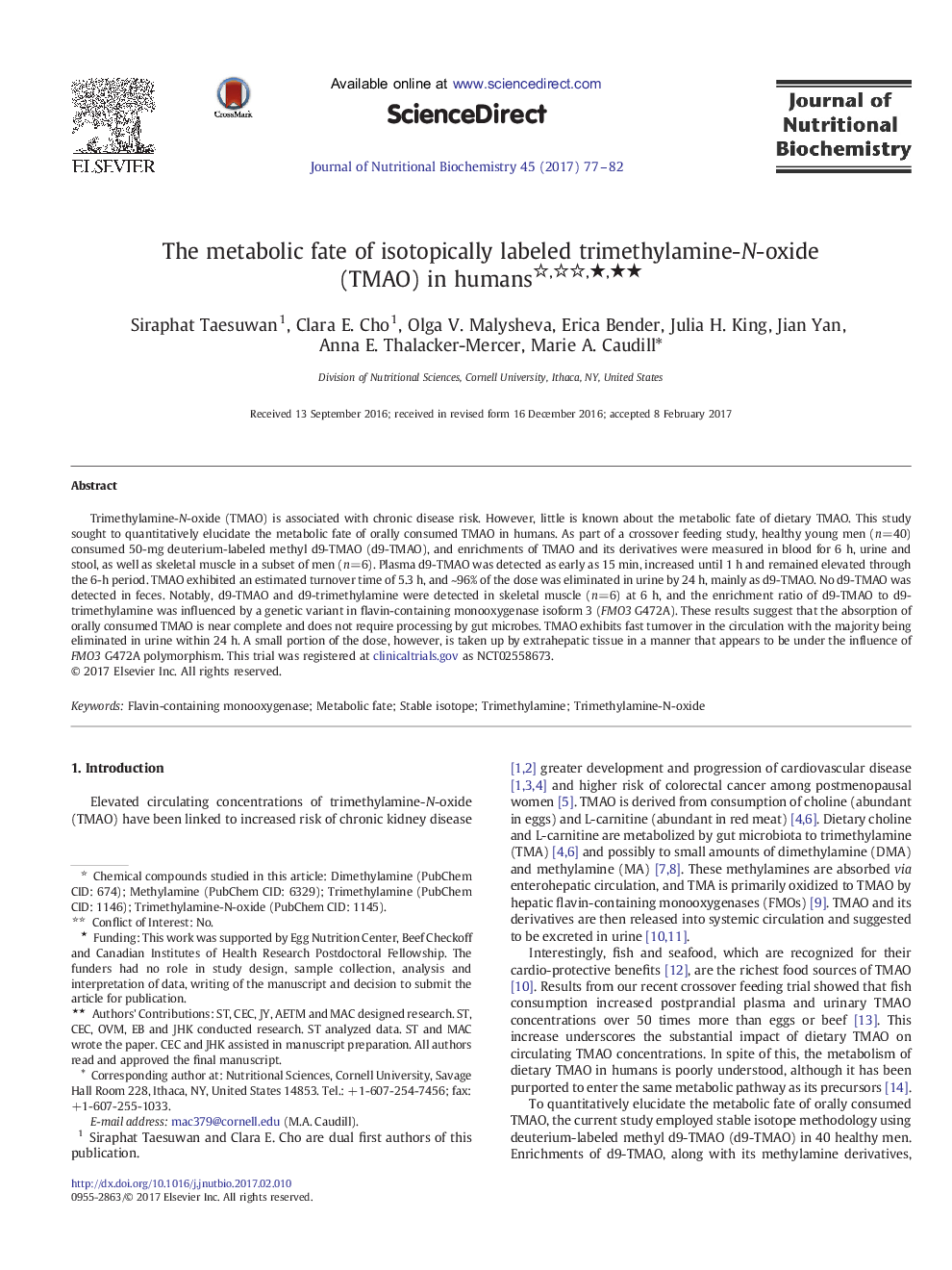| Article ID | Journal | Published Year | Pages | File Type |
|---|---|---|---|---|
| 5512822 | The Journal of Nutritional Biochemistry | 2017 | 6 Pages |
Trimethylamine-N-oxide (TMAO) is associated with chronic disease risk. However, little is known about the metabolic fate of dietary TMAO. This study sought to quantitatively elucidate the metabolic fate of orally consumed TMAO in humans. As part of a crossover feeding study, healthy young men (n=40) consumed 50-mg deuterium-labeled methyl d9-TMAO (d9-TMAO), and enrichments of TMAO and its derivatives were measured in blood for 6 h, urine and stool, as well as skeletal muscle in a subset of men (n=6). Plasma d9-TMAO was detected as early as 15 min, increased until 1 h and remained elevated through the 6-h period. TMAO exhibited an estimated turnover time of 5.3 h, and ~96% of the dose was eliminated in urine by 24 h, mainly as d9-TMAO. No d9-TMAO was detected in feces. Notably, d9-TMAO and d9-trimethylamine were detected in skeletal muscle (n=6) at 6 h, and the enrichment ratio of d9-TMAO to d9-trimethylamine was influenced by a genetic variant in flavin-containing monooxygenase isoform 3 (FMO3 G472A). These results suggest that the absorption of orally consumed TMAO is near complete and does not require processing by gut microbes. TMAO exhibits fast turnover in the circulation with the majority being eliminated in urine within 24 h. A small portion of the dose, however, is taken up by extrahepatic tissue in a manner that appears to be under the influence of FMO3 G472A polymorphism. This trial was registered at clinicaltrials.gov as NCT02558673.
